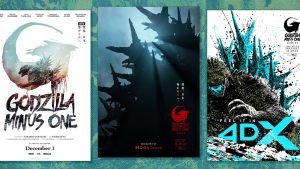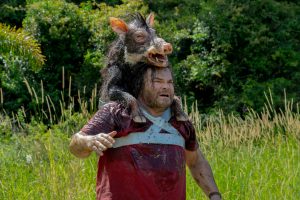
Libations Inspired by the World of Pre-Code Hollywood
by André Darlington
Foreword by Mark A. Vieira
TCM and Running Press
Hardcover ISBN: 9780762485208
248 pages
May 2024
“Pre-code movies are like forbidden fruit—especially when spiked with that harbinger of mischief, the cocktail.” — André Darlington
I thoroughly enjoyed Eddie Muller’s Noir Bar: Cocktails Inspired by the World of Film Noir, which released last year (my review). So it was natural that I’d check out TCM and Running Press’ follow-up Forbidden Cocktails. This one is themed around Pre-Code films, the era of filmmaking from 1930-1934 where the Hays Code—a set of guidelines that controlled how movies depicted, sex, vice, violence and morality—was in place but not enforced. As a result, there is a good 3-1/2 year period of time where we get the spiciest movies that early Hollywood had to offer. This era also coincided with Prohibition which in the United States made the consumption and sale of alcohol illegal. Prohibition ended December 5th, 1933 and we see a shift in how drinking is portrayed on screen after that. What was once forbidden then became celebratory.
Forbidden Cocktails: Libations Inspired by the World of Pre-Code Hollywood was written by author and mixologist André Darlington. He also co-wrote the TCM book Movie Night Menus which paired a meal and drink with 30 classic movies. In Forbidden Cocktails, Darlington pairs 50 Pre-Code films with a cocktail that fits both the era as well as the themes of each movie. On developing these recipes, Darlington writes:
“The mixed drinks I have created for this book are inspired by some of the most enjoyable and fascinating pre-code movies. The recipes employ period ingredients in formulations that pay homage to characters, locations, and scenarios in the films. Think of these cocktails as lost cousins that could have been consumed at the time.”
The book presents the films in a fairly chronological order starting with The Divorcee (1930) and ending (appropriately!) with The Thin Man (1934). It contains a good mix of well-known Pre-Codes and a sprinkling of more obscure titles. Hardcore Pre-Code fans will recognize all of them but others will definitely find a few gems hidden within.
I found a handful of the recipes doable based on my own very limited liquor cabinet. Some will require a special trip to the liquor store. If you’re concerned about the book being full of egg-white based cocktails, a common ingredient in cocktails of the early 20th century, fear not because there are very few to be found in the pages of this book.
Half the fun of this book was finding out how the cocktail matches its movie. Here are some notable Pre-Code cocktail pairings:
Dracula (1931) — Count Draiquiri with grenadine as blood.
Trouble in Paradise (1932) — Lubitsch Touch combines brandy, rum, apricot and lime for a cocktail with an air of sophistication.
King Kong (1933) — King Kong himself gets his own twist on the Banana Manhattan which includes whiskey, amaro and banana liqueur.
Cocktail Hour (1933) — Kansas Romanov is a reference to a character who pretends to be a Russian countess but is really from Kansas. It’s a take on the Vodka-Cran.
It Happened One Night (1934) — It Happened One Morning is a coffee based cocktail with a donut garnish, a fun homage to the coffee and donuts scene from the film.
The Thin Man (1934) — Asta gets his own cocktail which is inspired by the Hair of the Dog hangover chaser.
I made the Safe in Hell (1931) cocktail named Lady from New Orleans. The title is both reference to the main character and to the Walter Bergeron’ New Orleans cocktail View Carre from the 1930s. This cocktail also adds pineapple juice and is garnished with a pineapple leaf for that added tropical vibe.
I have a few small quibbles with the book. While the design has an Art Deco feel, the black matte gloss pages and the cover are slightly off-putting. I originally liked the cover but after looking at it numerous times it just doesn’t seem to suit the book or the others in the TCM library. I also think Noir Bar is a far stronger book than Forbidden Cocktails. The background information provided with each movie feels pretty standard. Noir Bar benefits from having an author who is both well-versed in film history but a trained mixologist himself. Themed cocktail books are all the rage now so I wouldn’t be surprised if we see ones for Musicals, Westerns, etc. in the future.
Forbidden Cocktails is a good fit for anyone who enjoys both Pre-Codes and a good cocktail. While it will have limited appeal, it could make for a wonderful present for a very specific recipient.
Thank you to Running Press for sending me a copy of Forbidden Cocktails for review!






